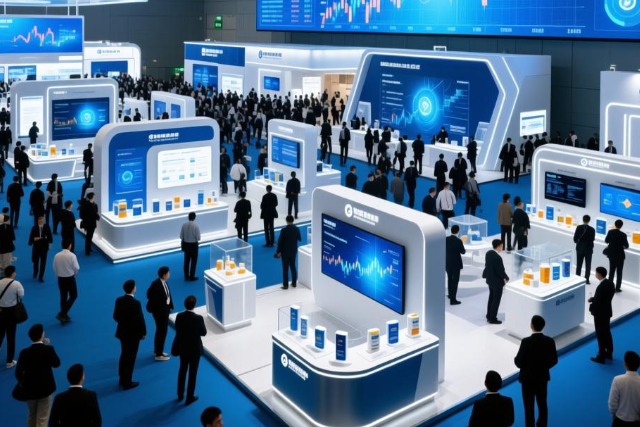In a highly competitive business environment, investment expos have become a crucial stage for companies to showcase their strengths and connect with capital. Whether it’s a startup seeking seed funding or a growth-stage company expanding its strategic investor base, every minute at an expo is crucial for seizing opportunities. However, facing thousands of exhibitors and a massive number of investors, how to break through the information noise and accurately reach target resources has become the core issue determining the success or failure of fundraising. This article will break down a systematic strategy from pre-exhibition preparation, during-exhibition execution to post-exhibition follow-up to help companies achieve a double leap in exposure and fundraising efficiency.
Pre-exhibition: Precise Positioning, Creating an “Eye-Catching” Persona
The pre-exhibition preparation work is essentially building a “cognitive bridge” between the company and investors. First, it’s necessary to clarify the core objective: is it to focus on brand exposure and attract potential customers, or to directly drive fundraising? Different objectives lead to significantly different strategies. For example, an AI company in its Pre-A round, if fundraising is the primary goal, should prioritize screening institutions interested in technology-driven projects, such as venture capital funds focused on hard technology; if brand exposure is the main objective, it needs to design more interactive booth activities to attract media and industry attention.
Booth design is crucial for first impressions. Avoid large, all-encompassing displays and instead adopt a less-restricted, scenario-based approach. For example, a health technology company integrated smart wearable devices, a health data platform, and telemedicine services by simulating a home health management scenario, allowing investors to intuitively understand the closed-loop business model. This immersive experience resonates more than simply showcasing product parameters.
Promotional materials need to balance professionalism and communicability. In addition to traditional brochures, create 3-minute short videos that condense the company’s core value with data and case studies; prepare “investor-specific resource packages” including a business model canvas, financial models, and competitor analysis to demonstrate professionalism. One consumer brand, through pre-exhibition promotion in industry communities, launched a “limited-edition trial pack” giveaway, successfully attracting over 500 people to register for a visit, tripling booth traffic.
During the Exhibition: Efficient Interaction, Locking in Key Resources
The core of execution during the exhibition is “time management” and “value output.” Clear team division of labor is essential: dedicated personnel for booth reception, follow-up with potential investors, and recording key information. For example, one company adopted a “1+1” model, with the product manager explaining technical details and the CEO focusing on business logic to ensure efficient communication.
Proactive outreach is more effective than passive waiting. Schedule meetings in advance using the investor list provided by the organizer; utilize the exhibition’s app’s “demand matching” function to quickly locate suitable resources. One fintech company completed in-depth discussions with eight institutions on the first day of the exhibition through the online appointment system, with three entering the due diligence stage.
Roadshows are the golden window for delivering concentrated value. Avoid lengthy technical jargon and instead present using a “problem-solution-market space” structure. For example, an environmental protection company focused on the “pain points of urban waste disposal,” showcasing the cost advantages and policy benefits of its biodegradation technology, receiving cooperation intentions from 12 institutions after the roadshow.
Post-Exhibition: Continuous Follow-up to Convert Exposure into Funding
The first 72 hours after the exhibition are the golden period for follow-up. Collected business cards and information need to be categorized and labeled: Category A consists of institutions with clear investment intentions, requiring detailed information to be sent within 24 hours and a second meeting to be scheduled; Category B consists of potential interested parties, who can be regularly informed with industry reports and company updates; Category C consists of long-term followers, requiring only social media interaction. One company, through its post-exhibition follow-up system, converted 200 institutions contacted at the exhibition into 35 in-depth communication partners, ultimately securing financing.
Financing negotiations require a good sense of rhythm. The first round of communication focuses on core terms, such as valuation, equity ratio, and performance-based agreements; the second round further refines the exit mechanism and governance structure. One company, through phased negotiations, compressed its original 3-month financing cycle to 45 days, improving efficiency by 50%.
In the arena of investment expos, the essence of exposure and financing is “value delivery” and “trust building.” From precise pre-exhibition positioning to efficient interaction during the exhibition, and continuous post-exhibition follow-up, every step requires professionalism and sincerity to impress investors.
Shanghai Fumo Exhibition Service Co., Ltd. has deep expertise in the exhibition industry, providing one-stop services from booth design to resource matching to help companies improve their exhibition ROI and turn every investment into financing opportunities.







